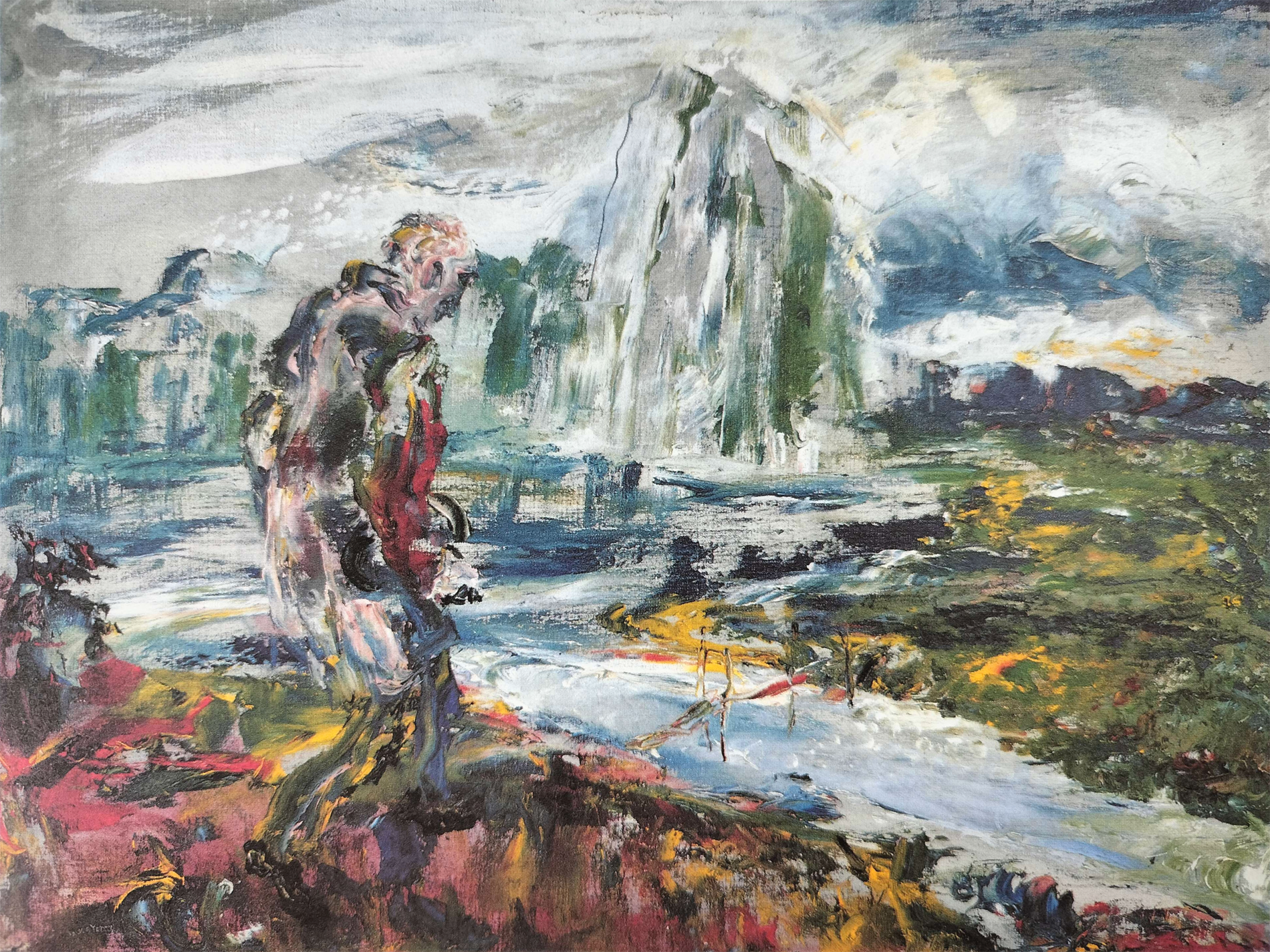

The first president of Tanzania Julius Nyerere once said that “The United States is also a one-party state but, with typical American extravagance, they have two of them.” Beckett sees in Yeats an irreducible singleness, but, with typical Irish dolorousness, there are two of them. When one sees the late landscapes displayed in the National Gallery of Ireland their placards emphasise the discontinuity between the works of the Irish master and the contemporary avant-garde in Europe. They require this lesson from Beckett to be understood as part of the arc of art history. In On Through the Silent Lands the shape of a man shambles through a blue valley, that same blue that can only be produced by the scattering of light through the dream’s vacuum. Everything seems to be made of glass. The foreground and background are confused, see-through. There are no shadows, the only shape to be found is caused by refraction: light moves in and out of transparencies of various densities with variable speed, and it is this multiplication of speed and force that produces any colour. It can’t produce depth.

The Golden Age is all gold and red and black. A shape that seems to dare us to admit that we think it’s a man stands among a physics of light, but unlike in On Through the Silent Lands there is no variation in translucency to produce the pretend material of dream glass. The light must be being acted on, somehow. How else could there be different colours? But this isn’t a question of seeing it and saying what it might look like, what material we can pretend we are seeing. This is more like the riddle of why we have difference at all. We see that it exists, we know that amplitudes overlay into timbres and that speeds overlay into accelerations. Things, despite the vacuum, appear to act on each other when they, somehow, touch.
The Historicity of Valley of the Shadows
Decorating Space and Time
Hyperoptics: Lessons From Cinematic Vision